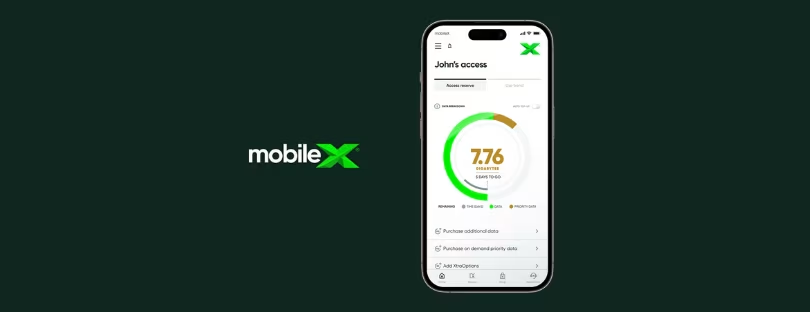
SK Telecom, KT & LG Uplus Enable Rich Communication Services on iPhones
For years, smartphone users in South Korea have lived in a divided messaging ecosystem. iPhone owners relied primarily on iMessage or third-party apps like KakaoTalk and WhatsApp, while Android users increasingly benefited from Rich Communication Services (RCS), a standard designed to replace outdated SMS and MMS with a more modern, interactive experience.
This gap often meant that communication between iOS and Android users fell back to SMS or MMS — resulting in broken group chats, heavily compressed media, and missing features that consumers elsewhere had already grown to expect. The contrast was especially striking in a country like South Korea, one of the world’s most advanced telecom markets, where consumers are quick to adopt new digital services.
That reality is now beginning to change. The country’s three major mobile operators — SK Telecom, KT, and LG Uplus — have officially enabled RCS support on iPhones through Apple’s new iOS 26 update. This marks a turning point not just for the South Korean telecom industry, but also for Apple’s evolving approach to global messaging standards. For the first time, iPhone users in Korea can enjoy carrier-based RCS features such as cross-platform group messaging, read receipts, typing indicators, and high-quality photo and video sharing.
The move follows growing regulatory pressure from the Korea Communications Commission (KCC), which has long emphasized the need for interoperability between platforms to ensure consumer choice and fairness. Globally, RCS has been heavily promoted by Google and adopted across most Android devices, while Apple resisted for years, keeping iMessage as a proprietary ecosystem. South Korea’s regulatory stance and competitive messaging environment made it one of the first markets where Apple decided to embrace RCS on iPhones in cooperation with local carriers.
What RCS Brings to iPhone Users
The rollout of RCS on iPhones in South Korea introduces a host of new features that were previously unavailable outside of iMessage or third-party platforms.
- Group chats across platforms – iPhone users can now join rich group chats with Android users (up to ~100 participants) without being forced back to SMS/MMS.
- Read receipts & typing indicators – Conversations become more transparent, with the ability to see when someone is typing or has read a message.
- High-quality media sharing – Photos and videos can be sent with far less compression compared to MMS, preserving clarity. Files up to 5 MB can be shared without incurring data charges.
- Business messaging with Brand Profile – Companies registered with carriers can display their logo and official details in message headers, making communication more secure and recognizable.
- No surprise charges for small attachments – Any file under 5 MB is excluded from data usage billing, removing the unpredictability of MMS costs.
These upgrades place carrier-based messaging much closer to the functionality that users have long enjoyed in iMessage, KakaoTalk, or WhatsApp.
Requirements and Limitations
Not every iPhone user in Korea can take advantage of RCS right away. The service comes with several important requirements:
- Device support – Only iPhone 11 and newer models are eligible.
- Software version – Devices must be updated to iOS 26 or later.
- Carrier support – Only available through SK Telecom, KT, and LG Uplus.
- Fallback to SMS/MMS – If a recipient does not have RCS enabled or is offline, messages may still revert to traditional SMS/MMS.
For users who meet these requirements, RCS will be enabled automatically once they update their iPhone and carrier settings.
Why This Rollout Matters
For Consumers
The rollout means fewer compromises when communicating across iOS and Android. Whether it’s sending vacation photos, organizing events in group chats, or verifying a message from a business, users now have more consistent experiences regardless of device type.
For Carriers
RCS brings telecom providers back into relevance in the messaging market. For years, mobile carriers have lost ground to over-the-top (OTT) apps like KakaoTalk, WhatsApp, and Telegram. With RCS, carriers can provide a richer service directly through the native messaging app, while also opening opportunities in branded business messaging and customer engagement.
For the Industry
This move is a precedent. Apple’s gradual adoption of RCS — starting in South Korea — signals a broader global shift. Regulators in Europe and North America are also pushing for greater interoperability, and the Korean case could serve as a model for similar rollouts elsewhere.
Global Context
- Google’s push – Google has positioned RCS as the successor to SMS, investing heavily in its rollout on Android devices worldwide.
- Apple’s resistance – Apple historically resisted RCS, preferring to keep iMessage as a unique selling point for iOS. But growing regulatory scrutiny, including from the European Union’s Digital Markets Act, has forced Apple to open up.
- Korea’s leadership – By aligning carriers and Apple, South Korea becomes one of the first countries to fully bridge the iOS–Android divide at the network level, highlighting its role as a testbed for advanced telecom services.
What Comes Next
The success of RCS on iPhones in South Korea will be closely watched by other markets. Key areas to monitor include:
- Adoption rates – How quickly users update their devices and embrace RCS features.
- Business messaging – Whether companies take advantage of Brand Profile to communicate with customers in more interactive ways.
- Encryption and security – Current RCS implementations vary in terms of end-to-end encryption; Apple’s strategy here will be critical.
- Expansion abroad – If Korea’s model proves effective, similar rollouts could follow in Europe, the U.S., and other advanced telecom regions.
Conclusion
The decision by SK Telecom, KT, and LG Uplus to enable RCS on iPhones through iOS 26 represents a watershed moment for mobile communication in South Korea. It closes a long-standing gap between iOS and Android, empowers consumers with a richer messaging experience, and provides carriers with a renewed role in the digital communication ecosystem.
More than a local upgrade, this rollout is part of a global story — one where regulators, carriers, and tech giants are redefining how messaging should work across devices. For South Korean iPhone users, the changes are immediate and practical: better group chats, clearer photos, smoother communication. For the wider industry, the move signals that the age of RCS on iPhones has finally arrived — and that the world’s messaging future may soon look a lot more unified.











